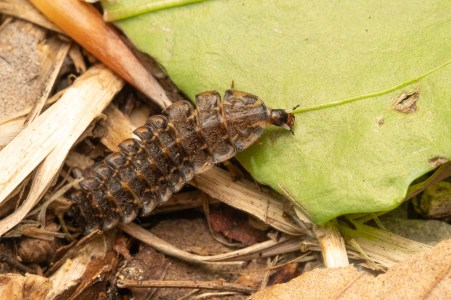Two reminders before your spring cleanup
Published 1:05 pm Friday, March 21, 2025
|
Getting your Trinity Audio player ready...
|
By Sharon Mammoser
If you’re like me, you can’t wait to get outside in the garden and yard once the weather starts warming up. Like a magnet, I’m drawn each day to go looking to see what plants are popping out of the earth, making their way into the sunshine. But in the recent past, I learned two things that have made me change the way I garden, especially in the spring.
Hopefully, you’ve left most of your plants standing through the winter. These provide food for birds and habitat and shelter for invertebrates. Plus, standing dried plants offer visual interest to humans. The stalks and dried seed heads are a lot more interesting to look at than an empty garden.
But now it’s spring, and you want to cut them down and clean up the garden, right? I know the feeling! But I learned from Xerces and Agriculture Agent Debbie Roos of North Carolina Cooperative Extension that how you maintain your garden is just as important as what you put in it. Debbie manages a large garden featuring over 225 species of perennials, trees, shrubs, vines, and grasses, 85% of which are native to North Carolina.
She recommends cutting down your standing dead stalks in spring at lengths between 8 and 24 inches. This will give native bees choices and allow them to nest in the stalks. In a few weeks, the fresh, green growth will perfectly camouflage the dried stalks. It’s not hard to do and makes a big difference to our native bees, 25% of which nest in cavities like hollow stems (the other 75% create nests in the ground).
If you’re wondering when precisely in spring to do this, wait until temperatures are consistently above 50 degrees.
“The earliest emerging stem-nesting bees are the mason bees, which start emerging in early March,” Roos says. “Small resin bees start emerging in April. Leafcutter bees, yellow-faced bees, and carder bees usually start emerging in May.”
A second reminder is about those leaves you’ve left on the ground. By now, you’ve likely heard that many critters, including fireflies, require leaves for part of their lifecycle. But like many people, you’re wondering after what date is it safe to get rid of them? When can you haul them away and “clean” your garden in preparation for spring and summer? This is a common question at talks I give about native gardening.
It’s also a hard one to answer—and the answer is not one most people like. The truth is that there is never a “safe” date to get rid of the leaves. Sure, some critters might be done with them in March, and others in April or May, but there will inevitably be some critters still using the leaves throughout the year.
Firefly larvae live in the soil and leaf litter for all but about two or three weeks of their life!
Yellow-spotted millipedes and common pillbugs live in them all the time, too, so when you remove the leaves, you eliminate these critters from your habitat. The best thing you can do is just leave the leaves and forget about them! They will decompose, increasing organic matter and putting those nutrients right back into your soil. The leaves also suppress weeds and improve the moisture retention of your beloved plants. It is essentially free fertilizer—a fact that many, many homeowners ignore every fall and spring.
Of course, for some neighborhoods, leaving your leaves where they fell is not going to be possible. Maybe you’ve put them around your flowers for the winter, but now you want them gone. In those cases, rake up the leaves and move them—whole—to put in a wild area, such as around trees or on your property line, or in another location in your yard where the leaves can just be left alone.
It’s an unfortunate fact that fallen leaves have been given the name leaf litter since they are anything but litter. The more biodiversity your yard can support, the more you’ll be part of the solution instead of the problem.

Firefly larva require leaves for most of their life.


